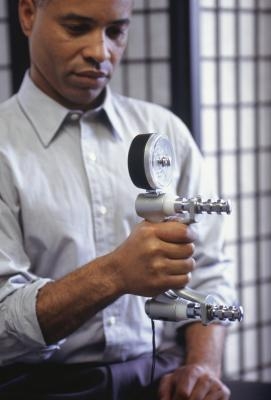
Engine efficiency always is an important factor in a vehicle. However, the efficiency of those engines will begin to degrade the moment they are driven. How quickly they degrade depends on many factors, including how often the vehicle is driven and the type of weather in which it is driven. To keep tabs on engine efficiency, you can build a simple dynamometer to test the engine. The production is not a simple procedure, but with knowledge of basic tools and attention to detail, a homemade dynamometer can be created.
Mount the engine onto the engine stand. Lock the engine into place on the stand using the attaching hardware. Per the hardware instructions, this is accomplished by tightening all nuts to the precise torque listed.
Place your tachometer and fluke multi-meter on the engine block so the probes of each can get to the flywheel, glo plugs, and headers without difficulty. Using the vehicle exhaust support straps and punched metal framing rods, assemble a small support capable of firmly holding the meters. They must be placed just over the top of the engine to permit the probes to reach.
Coil the probes, and connect them to their support frames using electrical tape. Keep them out of contact with any moving parts and from the engine. Turn on the engine, and allow it to idle for approximately 10 minutes. Turn off the engine, and verify all meter attachments still are connected properly and securely. If anything has shifted or disconnected, readjust the connection, and test again.
Connect the accelerator control to the servomotor. Turn the engine on again, and test to verify whether acceleration is regulated correctly by the servo. For your tests, note the settings you want to use for the accelerator. Upon completion of this prep work, turn off the engine again, and prepare to connect your engine dynamometer.
Affix the probes from each of the meters to the engine. The probes from the fluke multi-meter should be connected to the header and glo plug. For any areas on the engine that will allow proper detection of temperature, a probe should also be placed. The flywheel from the engine should have tachometer sensor probe aimed at it.
Allow the engine to run for a preset time. Note the readings from both the multi-meter and the tachometer as the engine runs. Also include the accelerator setting when these readings were taken. Some of the more advanced and costly multi-meters can be programmed to transfer all data to a spreadsheet on your computer. From this information, two parameters can be chosen to allow a dataset and graph to be formulated to ascertain the results from the test.